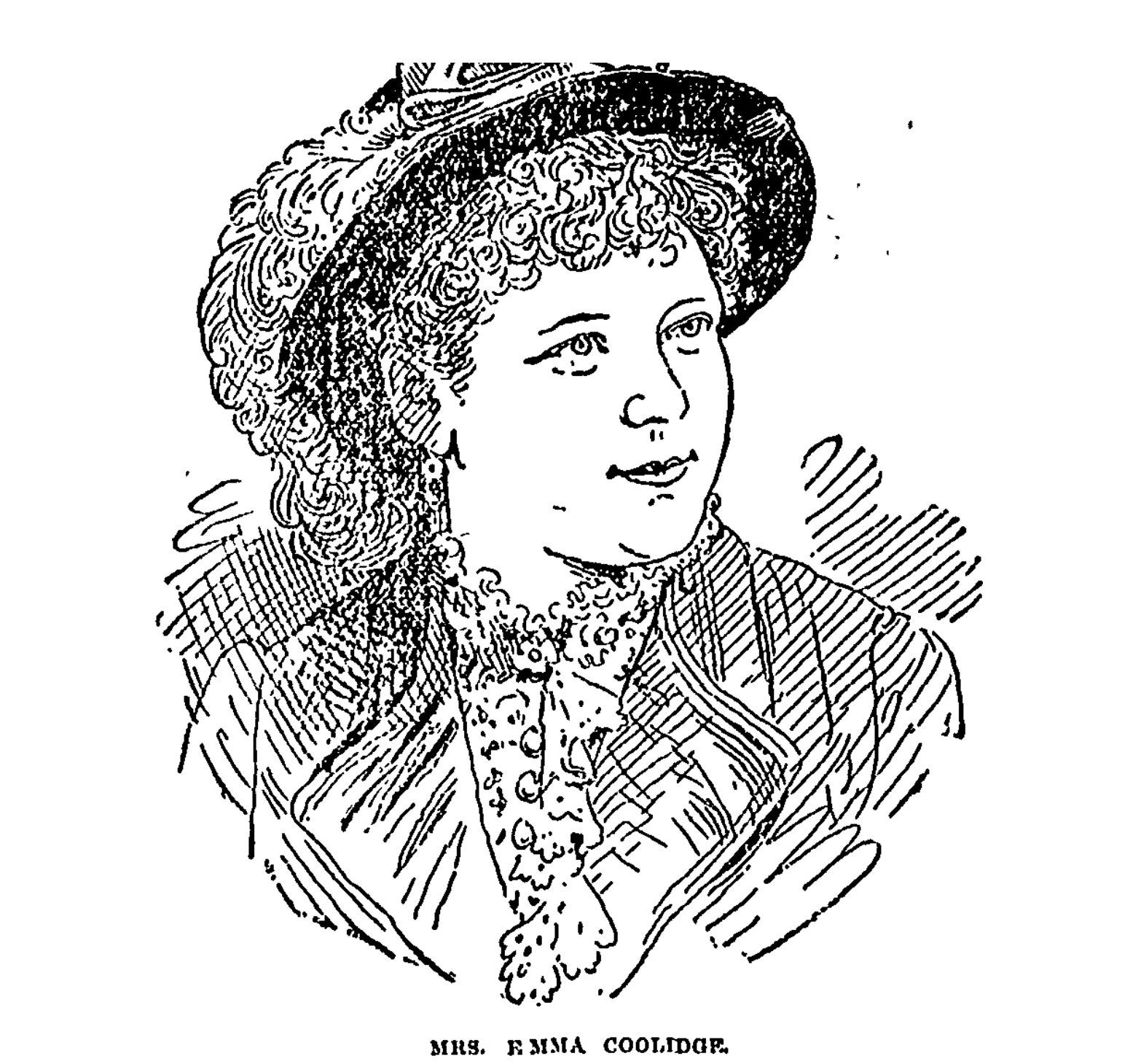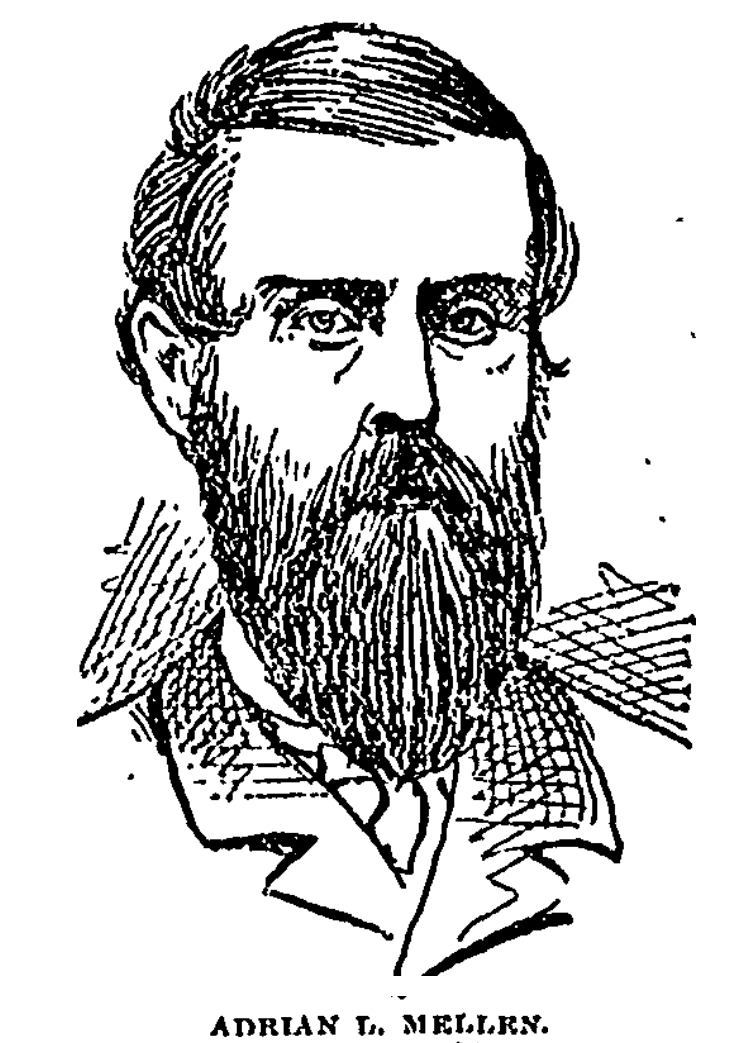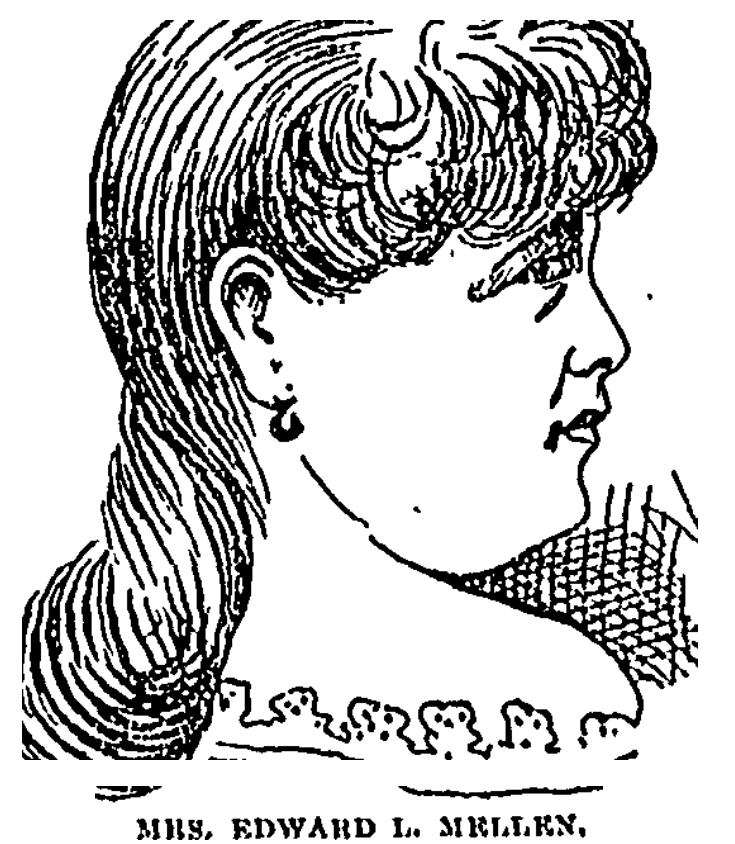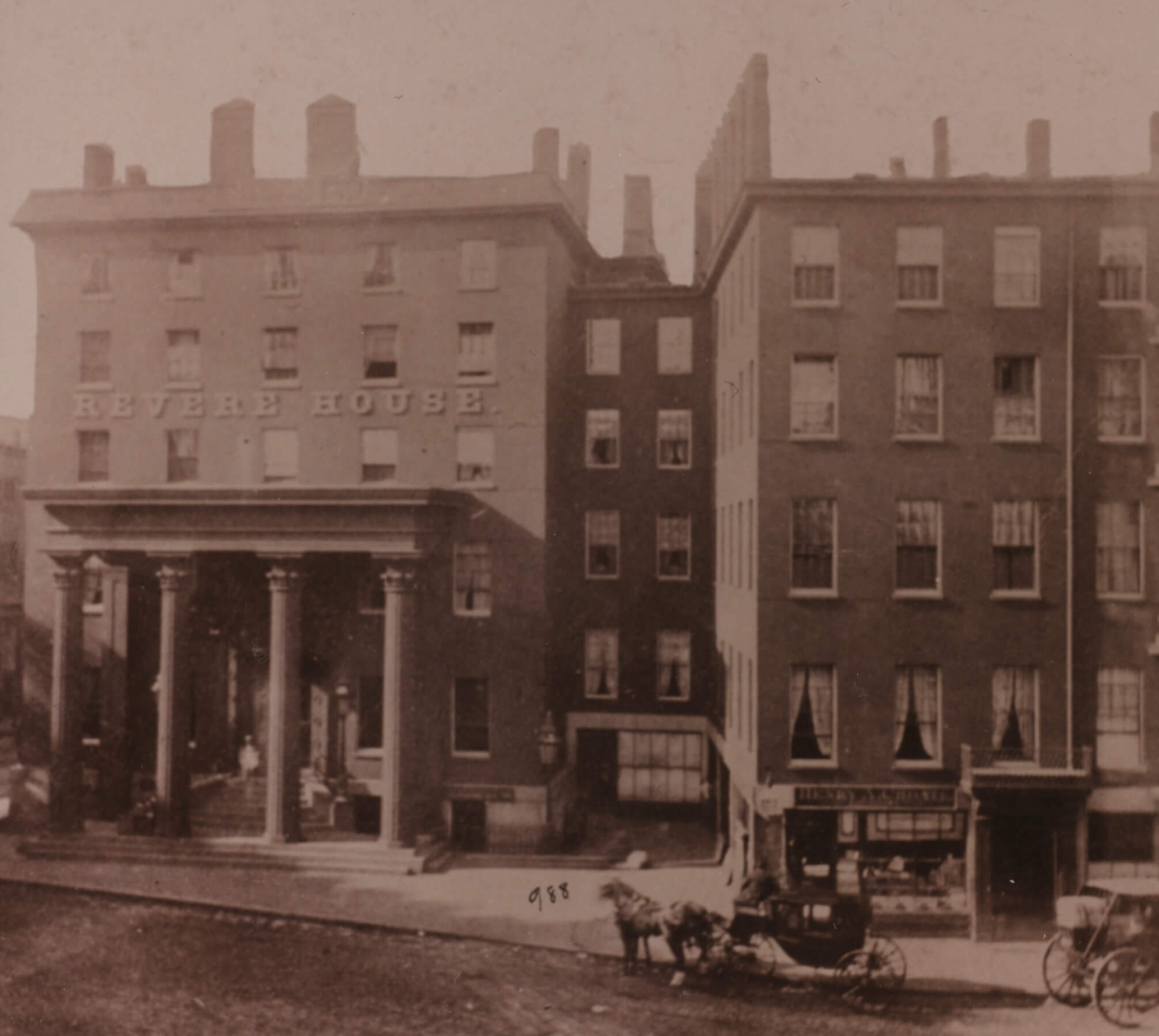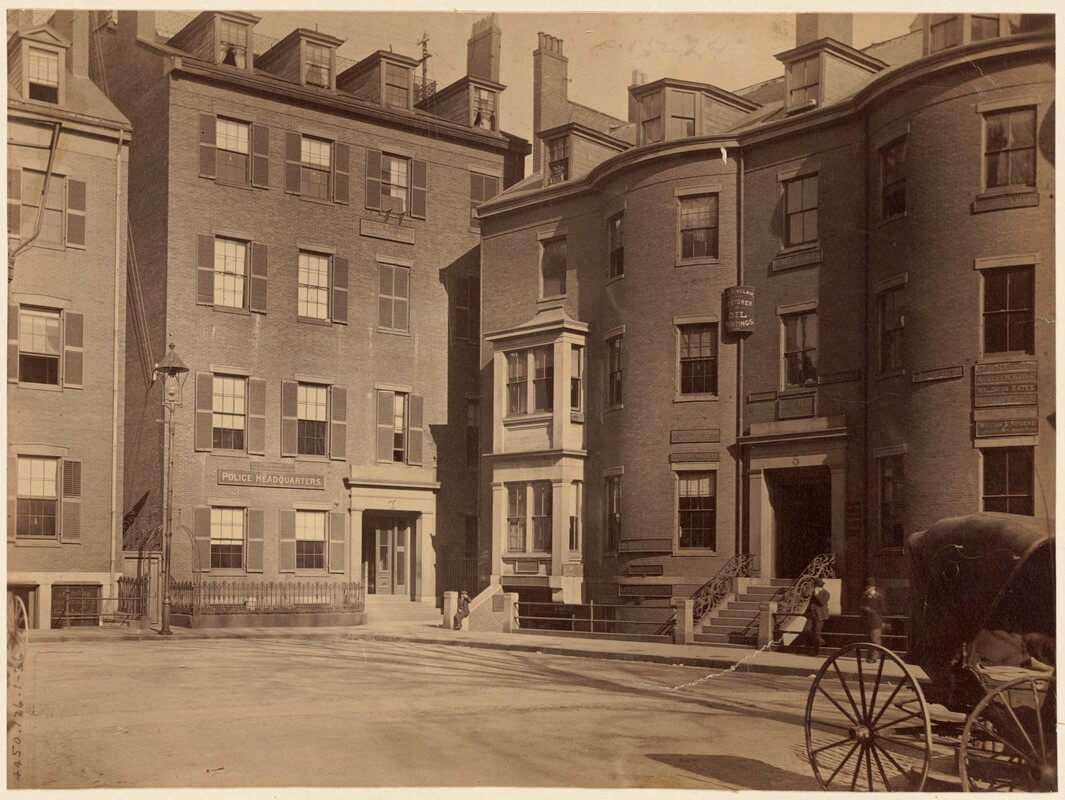The Mellen Murder Conspiracy: A Tale of Two Cities
For months, in 1885 and 1886, newspapers reported on a murder conspiracy which rocked the cities of Boston and Baltimore. West End locations played host to both the hatching of the plan to murder Mary (Somerset) Mellen in Baltimore, and the subsequent acts of justice in Boston.
On Friday October 9, 1885, Emma Coolidge, “a mysterious and beautiful blonde woman,” walked into the “free-and-easy retreat” run by Boss Cobb at 24 Norman Street in Boston’s West End. She was in search of professional help for an out-of-state friend in need of resolving what he and his wife considered a family disgrace. Her friend, a Mr. Adrian L. Mellen of Baltimore, was a hotel owner and respected member of that city’s high society. His son, Edward, had become involved with an English pantry girl named Mary Somerset who had worked at the Mellen’s St. James Hotel. Elder Mellen and his wife felt Mary was well below the family’s standards and were determined to end the relationship, even though Edward and Mary had a child and later married. Adrian Mellen needed the daughter-in-law “removed,” and thought his old acquaintance Emma Coolidge, a former resident of the West End then living in the South End, was just the person to help.
It is believed that Adrian Mellen began his relationship with Mrs. Coolidge in the early 1870’s in New York City. At the time, Coolidge was known around town as the “Eastern Beauty’, living and working at a “palace” (i.e. brothel) run by a Berdie Jackson on West 31st Street. Mellen met Coolidge at the “palace” while in town on business and the two began an affair. Desiring a more respectable and profitable situation, Coolidge later married a wealthy butcher from Philadelphia, who conveniently supplied meat to one of Mellen’s hotel in that city. When the butcher discovered Coolidge had been unfaithful, he divorced her and she returned to her old job in New York. She found another husband there, and returned with him to her home state of Massachusetts.
When Mrs. Coolidge went to Cobb’s West End establishment for help in October of 1885, it was just after she and Mellen had botched an attempt to kill Mary that summer. In what appeared to be an act of reconciliation with Edward and Mary, Mellen and his wife invited the young couple to vacation with the family at their resort in Cape May, NJ. Mellen also invited Mrs. Coolidge there to size up the victim and to slip her poison. Thanks to the efforts of the hotel surgeon, Mary survived the treacherous deed, thinking she simply had an illness. This time, Coolidge explained to Cobb, they wished to have someone travel to Baltimore to murder the girl. She hoped Cobb, a black man, could help her find the right person to finish the job, but insisted that the assassin be a white man. The price for the assassin would be $1000 (it was later learned Coolidge would receive $2000 for her part in the scheme).
Cobb knew just the man and introduced Coolidge to James “John Bull” Donahue the next day. Coolidge and Donahue met at least twice at the Revere House in Bowdoin Square to firm up the details. Donahue would pick up his payment from the clerk’s desk at the Revere House at 3 p.m. on October 17, then take a train to Baltimore the following week to commit kill Mary. That, however, was not how things happened. Having a change of heart, the would-be murderer rejected his part in the conspiracy and informed the Boston Police of Coolidge’s plot. Police staked out the Revere House as Donahue picked up his $1000 from the hotel’s clerk, hoping another accomplice, maybe even the ringleader, would appear, but no one showed.
Unaware she was under surveillance, Coolidge strode into the telegraph office under the Old State House on October 24, 1885 to update Mellen. As soon as she submitted her form to the clerk, Inspectors Gerraughty and Houghton pounced, arrested Mrs. Coolidge, and brought her Boston Police Headquarters at 37 Pemberton Square. For three days, she was held and interrogated, and eventually divulged her true identity, some details of the scheme, and signed a confession (before being given the chance to speak with family or legal counsel). The inspectors were not only shocked to learn that the mastermind of the crime was a fixture in Baltimore society, but also that Coolidge was married to a Boston Police patrolman, James E. Coolidge. Unable to acquire the $5000 bail levied against her, Mrs. Coolidge spent months in the Charles Street Jail awaiting arraignment and trial.
A Grand Jury in Boston finally indicted Coolidge and Mellen for the attempted murder of Mary (Somerset) Mellen on November 4, 1885. Boston Police had one conspirator in the bag, but nabbing Adrian Mellen was a different story. Visits to Baltimore by Inspector Gerraughty and others proved fruitless. Mellen was elusive and refused to cooperate with the Bostonians. Baltimore authorities were skeptical of the strength of the case against one of their own honorable figures and unlikely to extradite him without a legal struggle. In terms of evidence, Boston Police had Coolidge’s confession, Donahue’s “memorandum” of the facts, and the $1000 payment. They also had proof that Adrian Mellen and his wife were in Boston at the time of the money drop off, and met Mrs. Coolidge at the Revere House on multiple occasions. Most critically, Boston Police acquired a $500 check Mellen had given to Coolidge after the attempted poisoning of Mary. This was key, because Mellen publicly denied knowing Mrs. Coolidge.
On November 10, 1885, after receiving extradition orders from Gov. Robinson of MD., Marshall Frey of Baltimore dispatched men to the St. James Hotel to arrest Adrian Mellen. Finding Mellen gone, they searched the house and found nothing. Family members said they knew nothing of his whereabouts. In January of 1886 newspapers reported that Mellen was in Monterey, Mexico, and by the fall of that year he was living under an alias with his wife in Montreal, Canada. When discovered and interviewed there by a Boston Globe reporter, Mellen seemed confident that he was safe from extradition, though he knew detectives from Boston were watching him. He was never brought to justice, and it is assumed he lived out his days in Canada. Rumors flew that he would occasionally appear secretly at the St. James to conduct business and see his son, Edward.
As for Emma Coolidge, on April 5, 1886 a judge sentenced her to three years at the Sherborn reformatory prison for women based on her confession to conspiring to commit murder. As she awaited transportation from the courthouse to prison, she spoke at length to reporters and fully confessed her part in the conspiracy. Edward Mellen, left to run the hotel business abandoned by his parents, presumably remained married to Mary. Nothing is known of the futures of Boss Cobb and James “John Bull” Donahue, though it is safe to assume they found trouble somewhere else.


